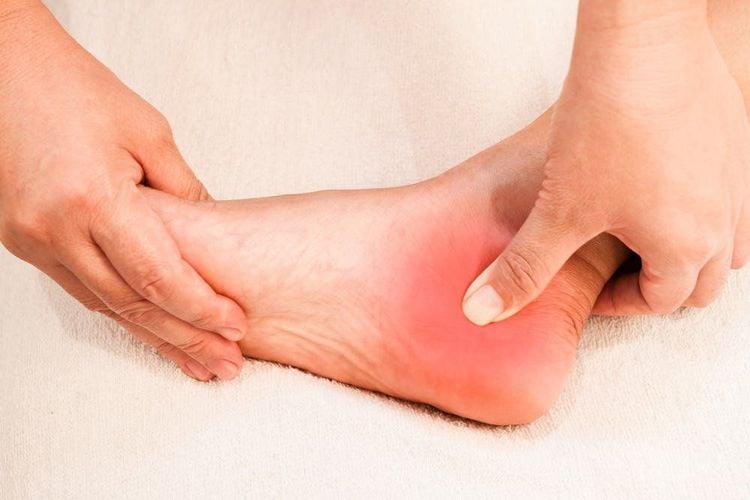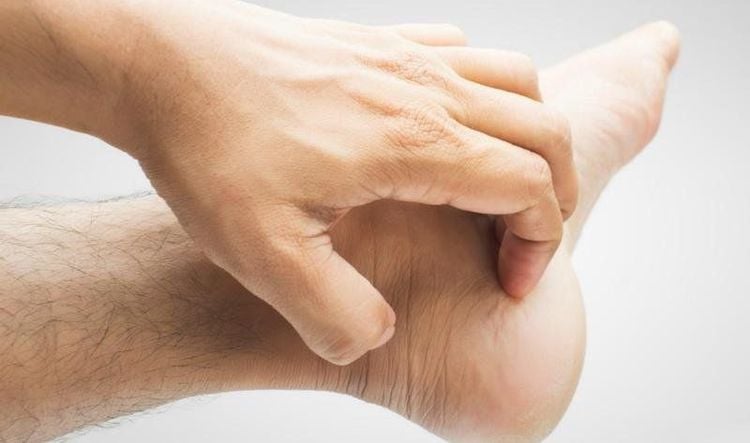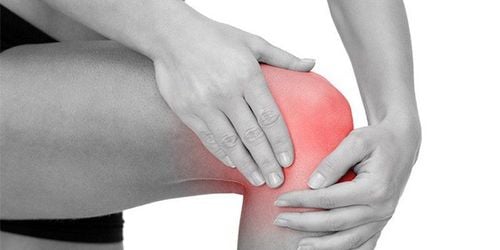This is an automatically translated article.
Feet not only play the role of a main part to help support the body's weight, participate in the activities of the entire lower extremities, but each position on the soles of the feet also connects with many other organs. together. In many cases, through manifestations such as hot feet, cold feet to know the health problems that we are having.
1. Cold feet
Feet in healthy people will usually stay in two states: cool in summer and warm in winter. If your feet and toes feel cold all the time, it's most likely due to poor blood circulation to your feet. This indicates that you have a circulation problem, which can be caused by smoking habits, chronic diseases such as heart disease or high blood pressure. One possible explanation for "cold feet" is the effect of diabetes on the nervous system. When the level of diabetes in the body is not controlled, it damages nerves and causes cold feet. In addition, cold feet are also a sign of anemia and hypothyroidism.
To improve this condition, you should apply some methods to keep your feet warm, including:
Regularly wear shoes and socks in winter Soak feet with warm water Eat foods that keep warm and warm up the body such as garlic, ginger Hot summer makes feet sweat a lot, to overcome For this, you should eat foods with cooling properties, such as squash.

Người bệnh thường xuyên đi tất vào mùa đông
2. Foot pain
According to recent studies, 8 out of 10 women have reported that they have foot pain due to wearing high heels during a long day. However, medical experts have revealed that the main cause of foot pain is not high heels, but rather a condition called "stress fracture" - which creates a small crack in the bone. This can happen because you exercise too hard or play physically demanding sports like distance running or basketball. In addition, the risk of foot pain is also significantly increased if you have weak bones from osteoporosis.
3. Color of toes
The color of the toes in healthy people is usually pink, not too red, not white, toes are not irregularly shaped and not wrinkled. If you observe the color of your toes turning white, then bluish, and then red, and finally returning to the original color, you most likely have Raynaud's syndrome. This disease is caused by a sudden narrowing of the arteries, also known as vasoconstriction. Raynaud's can also be associated with Sjögren's disease, rheumatoid arthritis, or thyroid problems.
If the toe is wrinkled or not full, it is a sign of a body with poor resistance and blood circulation is obstructed.

Màu sắc của ngón chân biểu hiện một số tình trạng bệnh lý của cơ thể
4. Color of soles
In the soles of our feet there are many important points, which have special connections with internal organs in the body such as the heart, liver, kidneys or stomach. Therefore, just based on the color of the soles of your feet, you can know what health problems you are having. If the soles of the feet are pink, it shows that your health is very good. On the contrary, the soles of the feet are too red or turn white, then there is a high risk that you are suffering from certain health problems, namely:
The soles of the feet are blue: body attributes Welding, it is easy to get cold feet in winter or cold sweat in summer. The soles of the feet are too red: your body is in heat, now you should use foods capable of detoxifying and cooling the liver to improve. Yellow soles: liver disease Black or purple soles: poor blood circulation White soles: anemia, weakness or coldness.
5. Heel pain
Heel pain is caused by plantar fasciitis - a condition in which the tendons of the foot become swollen (inflamed). The pain is usually most intense in the morning when you first wake up and can put pressure on your feet, making walking more painful and difficult. Some of the less common causes of heel pain include bone infections, fractures, bone tumors, or heel spurs.

Đau gót chân có nguy cơ mắc bệnh lý xương khớp
6. Dragging feet when walking
A change in the way you walk, such as dragging your legs or a wider gait indicates a health problem in your body. The main cause of this condition is damage to the peripheral nerves causing the foot to gradually lose feeling. Besides, statistics also show that about 30% of cases of dragging feet while walking are related to diabetes. Other possible causes include problems with the muscles, spinal cord or brain.
7. Change the shape of the big toe
If the shape of the toes, especially the big toe, suddenly changes in the direction of getting bigger at the top and slightly curved down, then you have a high chance of gout. In addition, this change can also be caused by other diseases such as lung disease, heart disease, infections, some disorders of the liver and digestive system. Sometimes, big and swollen big toes run in families.
8. Swollen feet
Swollen feet can happen when you stand for too long or are pregnant. This is completely normal and will only bring you temporary annoyance. However, swollen feet can also be a sign of a serious medical condition. The main causes of swollen feet include: blood clots, problems with the lymphatic system, circulatory system and underactive thyroid, or kidney dysfunction.

Ở phụ nữ mang thai có thể gặp tình trạng sưng bàn chân
9. Burning in the feet
Burning in the feet is one of the common symptoms in patients with diabetes or peripheral nerve damage. In addition, a number of other causes can lead to burning feet, including: chronic kidney disease, vitamin B deficiency, hypothyroidism or peripheral artery disease.
10. Sores on the feet
If there are ulcers on the feet that do not heal, then you are at high risk of developing diabetes. Because high blood sugar can impair circulation and open wound healing, even a blister on the foot can turn into an ulcer or even become infected. coincide.
11. Itchy or scaly feet
When feet are itchy or scaly is a sign of a common fungal infection. In addition, contact dermatitis caused by skin care products or certain chemicals is also the main cause of itching, dryness and redness of the feet. In cases where the skin on the feet is itchy and feels thickened like a pimple, this could be a sign of psoriasis, which is caused by an overreaction of the immune system. When you have this disease, you can treat it with creams or topical medications prescribed by your doctor.

Người bệnh bị ngứa bàn chân cần thận trọng bệnh lý da liễu
12. Leg cramps
A sudden and distinct pain in the foot may be a sign of muscle cramps or spasms. This pain usually lasts for a few minutes and subsides afterward. Some of the main causes of this condition include:
Overwork Muscle tension The body is dehydrated An imbalance between minerals present in the body such as potassium, calcium, magnesium, vitamin D The circulatory system poor performance Changes in hormone levels during pregnancy Thyroid disorders
13. Dark spots on feet
When black or brown dark spots appear on the feet, there is a high risk of you having skin cancer or having melanoma on the skin. Ideally, if you detect these abnormalities on your feet, you should immediately go to a medical facility to check and receive a treatment plan.
Hot feet, cold feet or tired feet all have certain causes, so when the above symptoms appear, patients can consider and go to medical centers for examination, especially subjects with thyroid disease, lung disease, liver disease, kidney disease, diabetes.
Customers can directly go to Vinmec Health System nationwide for medical examination and treatment or contact the hotline HERE for support.
Reference source: webmd.com
MORE:
Diabetic foot disease Learn about flat foot syndrome Structure, how the foot works













